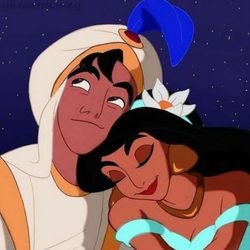

1- 3.8 billion years ago
FIRST SPARKS OF LIFE
Earth wasn't the blue-and-green marble we marvel at today. Liquid water was the hot new thing 3.8 billion years ago, after the planet had finally cooled from the constant bombardment of asteroids that had formed it. Landmasses-or continents-didn't exist yet, and the air was just a fog of toxic vapors: carbon monoxide, carbon dioxide, nitrogen, methane, and cyanide. The planet's surface was dotted with tiny islands in a shallow soup of chemicals: amino acids and fats, the basic components of life. The first life-forms- single-celled microscopic bacteria-formed in this soup, perhaps jolted to life by light- ning or meteorite impacts.
2- 2.5 billion years ago
CLEARING THE AIR
Single-celled "cyanobacteria" microbes in the ocean developed the power of "photosyn- thesis." Later used by plants, this planet- transforming process converts sunlight and carbon dioxide into energy, creating oxygen as a by-product. Oxygen-an important breathable gas for the evolution of a greater variety of life-forms-began to increase in Earth's atmosphere.
3. 1 billion years ago
LIFE LEVEL UP
The first multicellular life-forms appeared in the oceans. A cell is the basic unit of life; multicelled organisms are made of colonies of cells that specialize in different functions. (Your body is made of trillions of cells.)
4. 550 million years ago
LIFE EXPLODES
Life underwent a big boom in diversity-a period known as the Cambrian explosion. Before this time, all life-forms were squishy: boneless, toothless, and without shells. But creatures during the Cambrian explosion- all still limited to the oceans-toughened up to swim, burrow, and hunt. They developed hard parts, such as simple shells, to defend themselves. The ancestors of fish, snails, octopuses, squid, crabs, and bugs appeared in the ocean, along with the first simple vertebrates (animals with a backbone).
5. 430 million years ago
PLANTS TAKE ROOT
Plants transitioned from the water to spread across the land.
6.370 million years ago
VERTEBRATES HIT THE BEACH
The first amphibians evolved from air-breath- ing fish and began to crawl on land using fins that work like limbs. They're followed by the earliest reptiles around 70 million years later.
7. 260 million years ago
DINOSAURS DOMINATE
All of Earth's continents-or landmasses- had joined into one supercontinent known as Pangaea. Its dry, hot interior was a paradise for reptiles, which grew in size. The first dinosaur-a plant-eating creature no larger than a kangaroo-showed up on the fossil record 240 million years ago. Dino- saurs exploded in diversity. As Pangaea started to break up around 220 million years ago, dinosaurs spread to every on Earth. They reigned for nearly 150 million years.
8. 150 million years ago
EARLY BIRDS
The first birds-which evolved from two-legged meat-eating dinosaurs-took to the skies on feathery wings. With their reptilian tails, arm claws, and sharp teeth, these early birds weren't as pretty as their descendants are today.
9.60 million years ago
RISE OF THE MAMMALS
The sudden death of the dinosaurs 65 million years ago likely from an asteroid impact- left a void for smarter, smaller crea- tures to fill. Enter the mammals. These furry creatures lived underfoot of the dinosaurs for nearly 150 million years, but suddenly the world was theirs. Mammals grew in size and diversified into many of the species we know today: cats, dogs, horses, bats, rats, and tree-dwelling primates (the order of animals that eventually gave rise to gorillas, chimpanzees, and humans).
10. Between 13 and 6 million years ago
DOWN TO EARTH
The common apelike ancestor of humans and chimpanzees (our closest living relative today) climbed down from the trees and eventually evolved to walk on two legs. Not long after, hominids appeared and branched off from the lineage that gave rise to chimps. Hominids include humans and our immediate ances- tors (such as Homo erectus) and close relatives the Neanderthals.
11. 200,000 years ago
THE BEGINNING OF HUMAN BEINGS
Finally, we arrived on the fossil record (or, rather, our species, Homo sapiens, did). The first Homo sapiens-which means "thinking humans"-appeared in eastern Africa nearly 200,000 years ago. In tribes of hunters and gatherers, we left the mother continent around 140,000 years later, eventually spreading to every corner of the globe while leaving our less-evolved ancestors Homo erectus in the evolutionary dust. Our relatives the Neanderthals died out, possibly because humans hunted them for food or started families with them. Today, humans are the only Surviving hominids.


